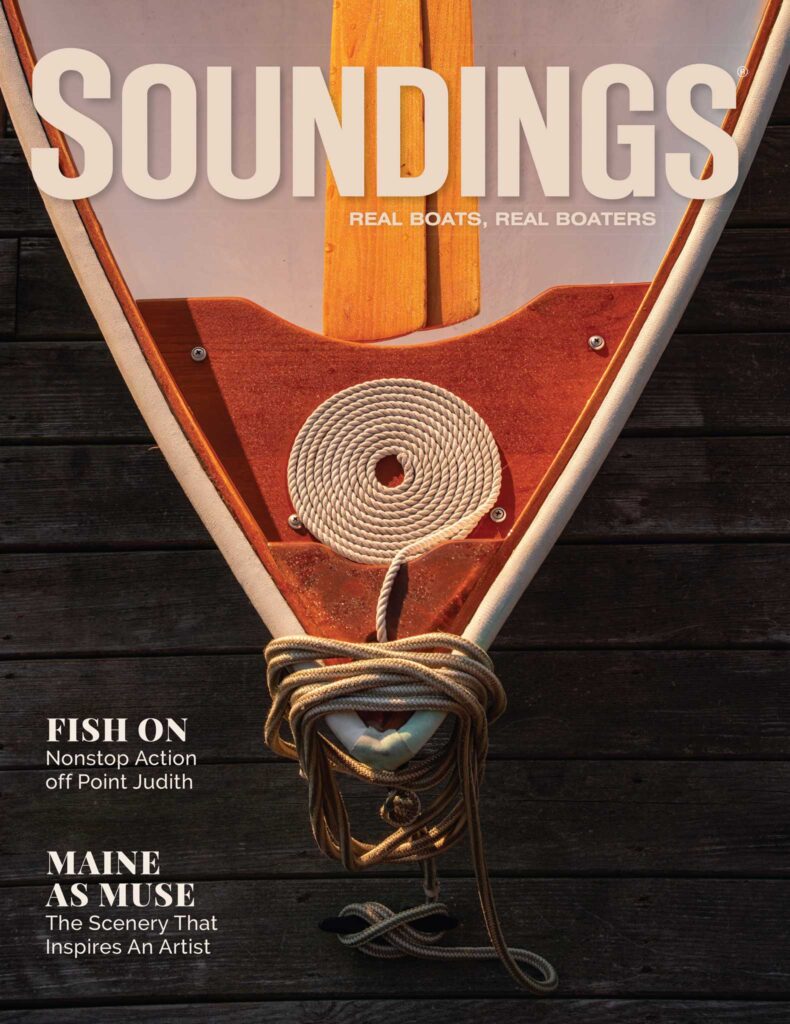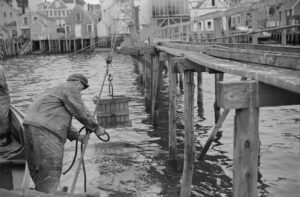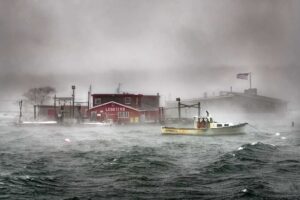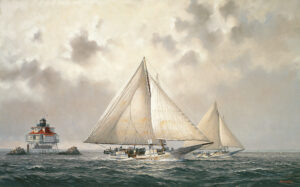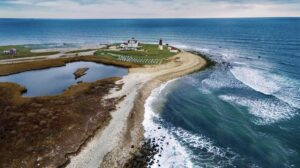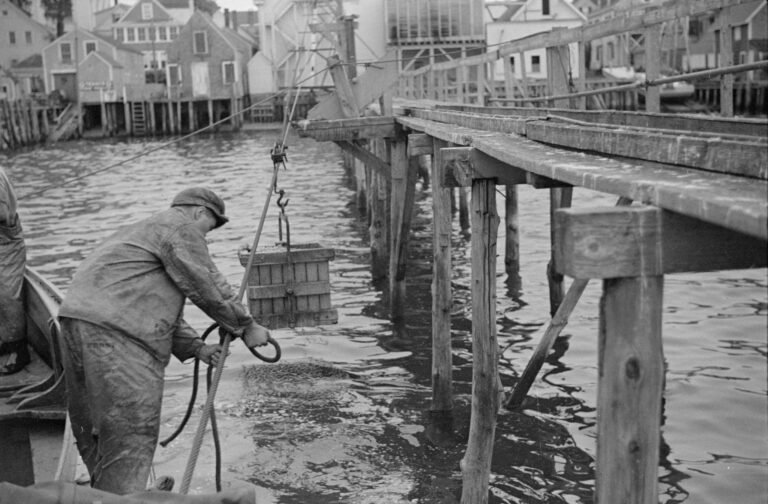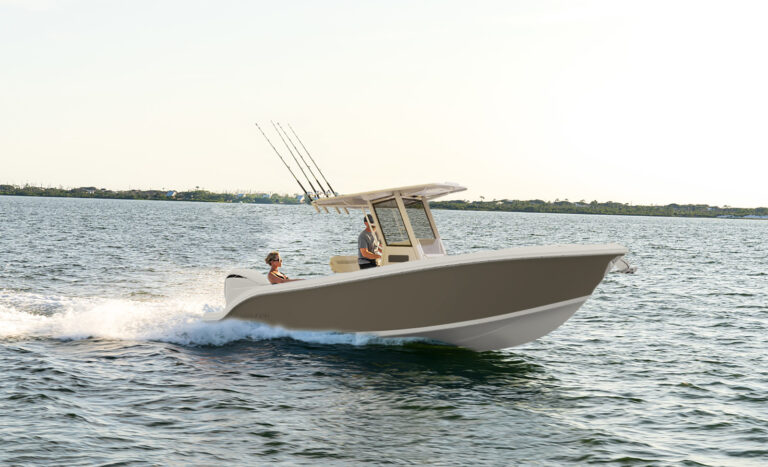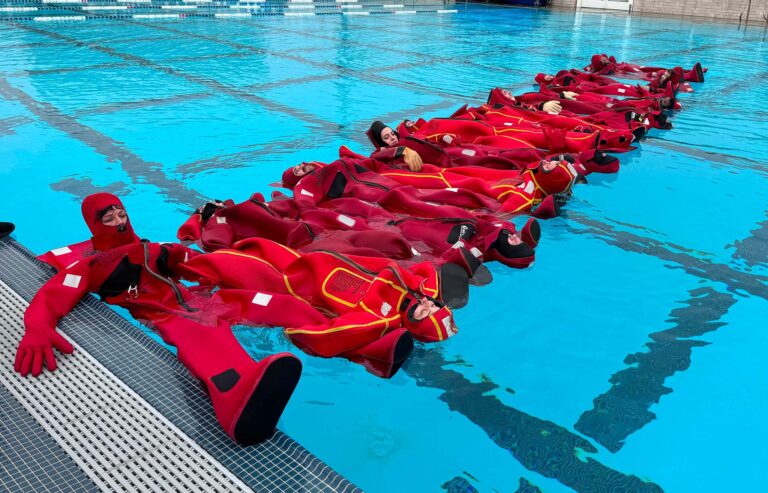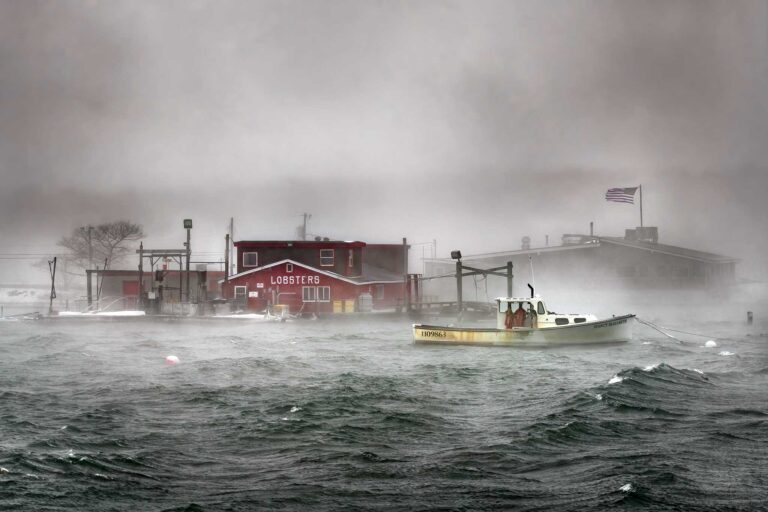Standing behind one of the steering wheels of the world’s most outrageous monohull racing yacht, you have to squint to read the instrument displays on the mast. The most important number is the one on the top: boat speed. And it read 10.2 knots. A joke. On any other boat that’s cause for celebration, given that the wind speed on Block Island Sound was in the single digits. But aboard Comanche it felt like dragging the hook. For a speed machine that guzzles wind like an old Chevy guzzles gas, an anemic breeze is the mortal enemy.

If winning is this yacht’s primary purpose, it also condemns her to rewriting the record books using the tried-and-true recipe: a long waterline and power, power, power. That’s Physics 101, really. And it’s the law by which boats such as Comanche must abide. In measurement trim she displaces 75,000 pounds, most of which is in the lead bulb at the end of her canting keel strut. Stern to bow she measures 100 feet, minus 2 millimeters, bowsprit not included. That’s supersize by any standard, but not as big as she could have been if it weren’t for a rule that caps the maximum length for boats to be eligible for line honors and official records in big bluewater races. But the most conspicuous measurement is her beam of 26 feet, more than a quarter of her overall length, which earned her the unflattering nickname “aircraft carrier.” That’s funny but not fair because other extreme monohulls, such as her chief rival Rambler 88, or the IMOCA 60s, which influenced her design, have a similar or more extreme length-to-beam ratio, but they are smaller, which means they are less imposing.
For Comanche the usual standards do not apply. She’s capable of top speeds in the upper-30-knot range and long-term averages in the mid-to-high 20s, numbers that large racing multihulls or foiling cats typically push. “We went around Block Island; the breeze filled in to 24 knots,” skipper Ken Read says, describing a typical tune-up for the Transatlantic Race last summer. “Under staysail, jib and main, we were going 27. Before you knew it, it was 10 minutes to Martha’s Vineyard. And we weren’t even trying.”
During that event Comanche ripped off 618 nautical miles in a 24-hour period between July 10 and 11, setting a new 24-hour distance record for monohulls at an average speed of 25.75 knots. Impressive, yes, but nowhere near her full potential. Read says 650 miles is “definitely within range. We had consistent wind direction for almost two full days … but if we ever got lucky to reach a little bit more, you could average 2 to 3 knots faster. So if we could harden up 10 degrees, sky’s the limit.”
Such superlatives are expected by her owner, billionaire technology entrepreneur Jim Clark, 72 (Netscape, Silicon Graphics), who hails from the Texas panhandle. That’s an arid stretch of land and a long way from the ocean, but as the historic territory of the Comanche people, it inspired the boat’s name.
Clark, who’s married to Australian model Kristy Hinze, 36, is dealing with damaged ankles, which limits his presence aboard Comanche (see sidebar). Still, as a technophile, he loves complex, cutting-edge projects. And, of course, he also loves winning. His other yachts include the 295-foot Athena, a fully computerized three-masted schooner, and Hanuman, a modern replica of the 1937 J Class yacht Endeavour II. Tied up at the same dock at Newport (Rhode Island) Shipyard, these two vessels could not be more different in character and appearance: here, the sleek 140-foot classic yacht, with her slender black hull and voluptuous overhangs; there, the brawny testosterone machine with plumb ends, sharp chines and full war paint.
Yet both of them move best when sailed at great angles of heel. “It’s about stability. The wider, the more stable the boat, the more sail it can carry, and the bigger the forward thrust,” says Read. Simultaneously, the wetted surface area of the hull must stay small. “We keep the heel at 25 to 30 degrees and sail it like a multihull, with the apparent wind forward all the time.” Sail on the rail would be an appropriate term when she rides on her chines. To reduce sideways slippage, Comanche uses 18-foot daggerboards, though not all the time. “We found out she doesn’t make a ton of leeway without boards,” explains navigator Stan Honey, whose best friend is Comanche’s speed. “Like on a fast multihull, you can pick your own weather,” he says, meaning that the boat is fast enough to chase the wind.
But stability also is a function of righting moment, which on Comanche is anywhere between 170 and 180 tons. It’s achieved through 6.5 tons of water ballast stored in built-in tanks on each side and a massive canting keel with lead bulb that draws 22 feet when straight down. It is moved by hydraulics and a 210-hp diesel. When a maneuver beckons, the helmsman pushes a button to fire it up. It also can drive select winches, but Comanche’s large Harken carbon drums, with ceramic coating and custom-engineered carbon/titanium drive shafts, are connected to half a dozen coffee grinders.
Manual operation not only saves fuel, but it’s also a rule requirement for official record attempts. As a result, Comanche can resemble a floating gym, with brawny dudes turning winch handles to tame more than three miles of Spectra lines and to deal with working loads that can reach as much as 30,000 pounds on the main sheet. And if that isn’t enough, stowing, stacking, setting and dousing those huge sails on a carbon mast that rises nearly 150 feet above the deck requires more muscle still. All up, Comanche can fly about 12,000 square feet of North 3Di Raw sails, more than the size of your average suburban building plot.
Clark and Read tapped the French design firms of Guillaume Verdier and Marc Van Peteghem and Vincent Lauriot-Prevost, which are known for record-breaking multihulls, such as Spindrift (formerly Banque Populaire V) and successful IMOCA 60s, such as Macif, which won the last Vendee Globe single-handed race around the world. “Altogether we had 10 to 12 people working on the project, plus a lot of subcontractors to consult with engineering the mast and sails,” Verdier was quoted as saying. He estimates the design work alone took about 15,000 hours. Special attention was paid to the longitudinal center of gravity and the mast position, which are both farther aft on Comanche. This promotes planing while it keeps her nose up to avoid stuffing the bow at high speeds.

Although much of the design work was done in France, the behemoth took shape in the sheds of the renowned Hodgdon yard in East Boothbay, Maine. As you’d expect, carbon fiber is the dominant theme in the hull and deck, but also in the primitive two-burner galley and the sporty-looking head. Most of the hull structure is cored, but forward of the mast where slamming occurs it is pure carbon to save weight and to avoid the core shearing and delamination problems that bedeviled the Volvo Ocean 70s.
Sitting below deck in the dark and cavernous space there is no hint of creature comforts. When the engine is running, you have to yell at the guy next to you — it’s that loud. Moving about when the boat is underway requires balance and surefootedness to avoid tripping over the longitudinal stringers or hitting your noggin on one of the 15 bulkheads. Honey, one of the world’s most successful and experienced navigators, is used to this. He spends most of his waking hours in front of a battery of computer screens, wedged into a tiny carbon caboose (the nav station) beneath the companionway steps. Yet during the Transat he tripped and fell, which resulted in a blow to his head. “It’s the most exaggerated, blown-out-of-proportion slip, tumble and fall in the history of mankind,” says Read. Even so, it forced Honey to sit out his next assignment, navigating the Australian 100-foot maxi Wild Oats IX from Los Angeles to Hawaii in the Transpacific Yacht Race.
It was ironic because Wild Oats was the only boat to beat Comanche in her inaugural regatta, the Sydney Hobart Race. Comanche led the fleet, but as the wind lightened, her largest asset — the big beam — became a liability, which enabled the older but slimmer Australian yacht to slip by and build a lead that Comanche could not surmount. It was exhibit A in the case against wide boats that get sticky when there’s not enough breeze to sail them at sufficient heel. “That’s the giant sucking sound you don’t want to hear,” says Canadian Richard Clarke, one of Comanche’s crew. Read calls it a “tradeoff to drag around a big, fat ass” in light air.

Since then Comanche has been modified and improved. Her sails were optimized, her rudders were shortened, and nearly 700 pounds were shaved off her overall weight. It’s the process that starts the day of the launch and continues until the yacht is decommissioned. “With these boats, the minute you stop and say ‘we’re great’ and pat yourself on the back, you’re screwed [because] somebody’s going to go flying by,” says Read, adding that not all changes are guaranteed to make a boat faster. He considers the Dynamic Stability System, which uses horizontal boards to increase lift, too heavy and complex, but it seems to work on Rambler 88 in breezy conditions to the point that she beats her larger rival on handicap — but not boat for boat. She came close to doing just that in this year’s light-air Fastnet Race, but Comanche managed to eke out line honors by a few minutes. And that’s what counts, even though she finished 272nd out of 296 boats on handicap in the IRC class. (Rambler 88 was 231st.)
Back out on the millpond that was Block Island Sound, guests were taking tricks at the wheel. “Watch for the wind shear,” Read pointed out. “You have to look at the top of the sails.” That’s about as high as the 16th floor. Again it was necessary to squint, this time to see which way the tiny telltales were pointing. But as soon as a puff hits, Comanche accelerates like a dinghy, accompanied by a cacophony of sounds — the groaning of winches loaded up, the squeaking of synthetic lines pulled as taut as piano wire, and the roar of the engine, which pushes the canting keel farther to windward. Still, the angle of heel increases quickly and dramatically, so the platform for the helmsman has to be angled up just to keep the footing stable. (That feature probably is not available on a real aircraft carrier.)

But sailing under her giant gennaker she also hinted at some slight lee helm. It was neither dramatic nor unsettling, just a function of the setup. Racers deal with it all the time. But it is a reminder that, in the end, even this high-tech speed machine — like all sailboats — is a slave to physics.
This article originally appeared in the November 2015 issue.

